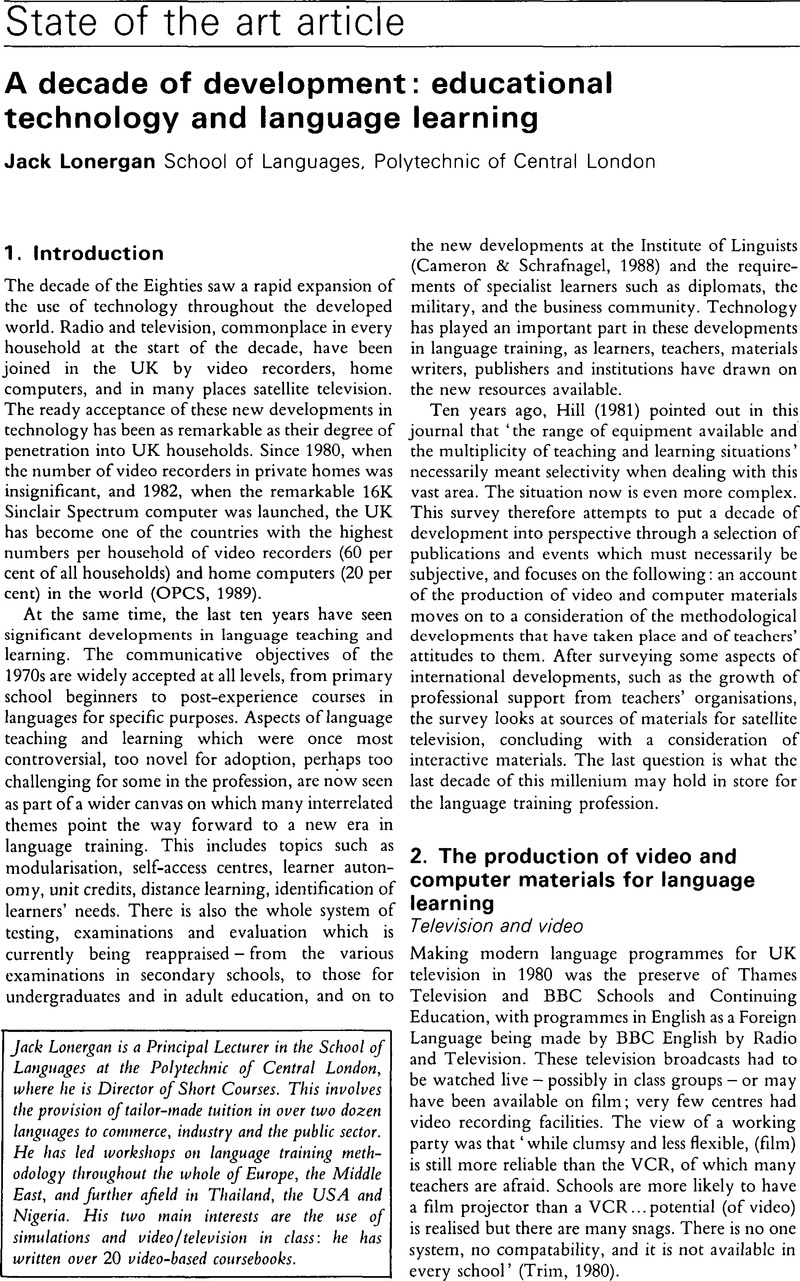Crossref Citations
This article has been cited by the following publications. This list is generated based on data provided by Crossref.
Sheerin, Susan
1991.
Self-access.
Language Teaching,
Vol. 24,
Issue. 3,
p.
143.
White, Ron V.
1992.
Innovation in Curriculum Planning and Program Development.
Annual Review of Applied Linguistics,
Vol. 13,
Issue. ,
p.
244.
Vanderplank, Robert
2016.
Captioned Media in Foreign Language Learning and Teaching.
p.
7.


